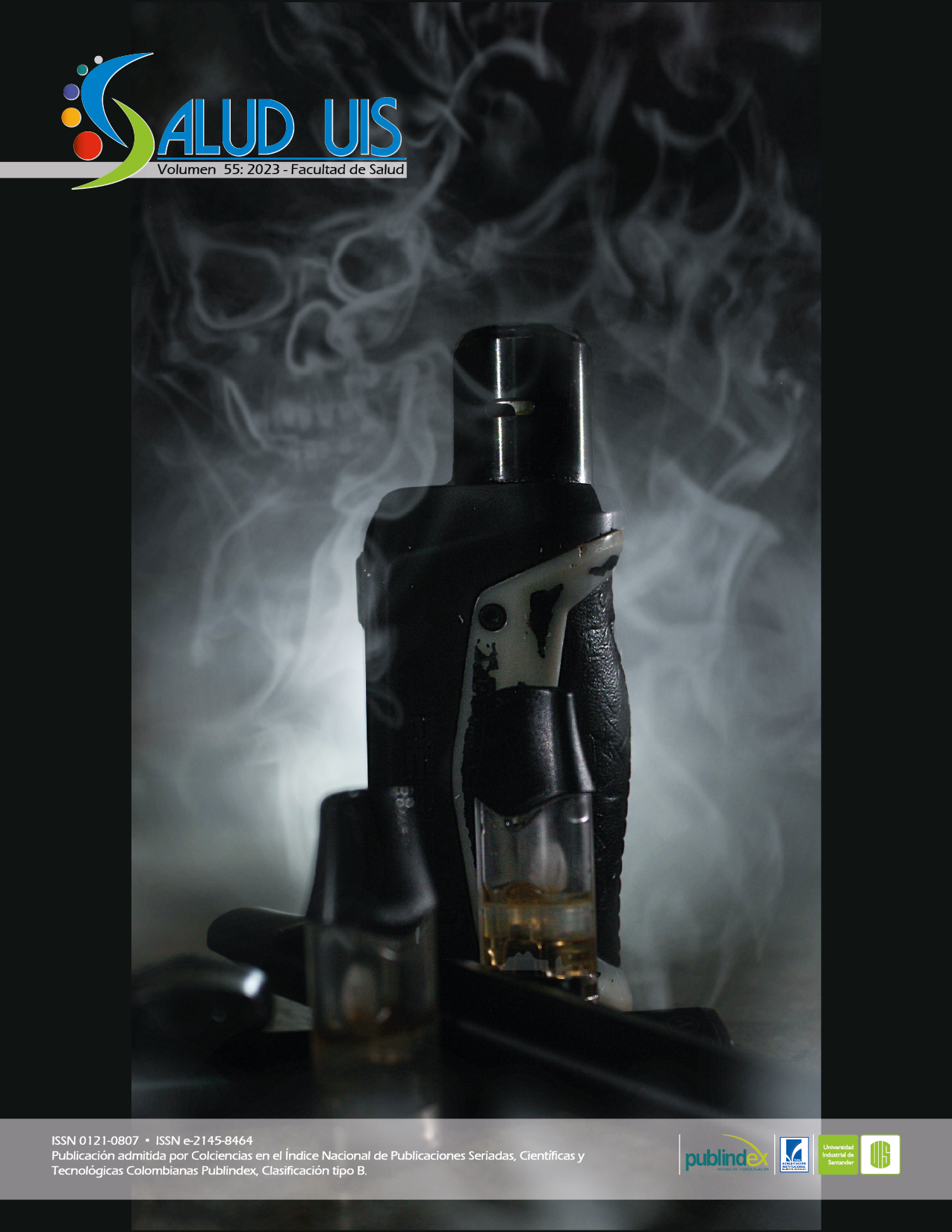Abstract
Introduction: mobile applications (Apps) are transforming learning perspectives in healthcare settings. Objective: to evaluate the effectiveness and usability of EpiApp as a support tool in the consultation and resolution of epidemiology problems, compared to traditional methods (TM). Methodology: EpiApp was designed using a methodological structure. A randomized controlled experimental study was conducted with two groups: EpiApp and TM. A standardized questionnaire and the MARS scale were used to evaluate effectiveness and usability, respectively. Results: a total of 176 students were randomized: EpiApp (n=88) and TM (n=88). Response time was shorter for EpiApp users (23.99 min [±SD 8.38] vs. 29.16 min [±SD 11.61], p=0.005). There were no differences in the number of correct responses (p=0.635) or the opportunity to pass the questionnaire (p=0.054). Usability was good (MARS>4). Discussion: mobile Apps have great potential to be useful in healthcare education and decision-making in epidemiology, as well as in general medical care. However, it is essential to conduct rigorous studies to ensure that these applications are effective, useful, and easy to use and understand. Conclusions: EpiApp reduced response time in solving epidemiology problems without affecting the number of correct answers. The usability was good, although there is room for improvement in terms of enjoyment, interest, individual adaptability, and interactivity. The effectiveness and usability of EpiApp need to be validated through more rigorous studies in different contexts.
References
Mi M, Wu W, Qiu M, Zhang Y, Wu L, Li J. Use of mobile devices to access resources among health professions students: A systematic review. Med Ref Serv Q. 2016; 35(1): 64–82. doi: https://doi.org/10. 1080/02763869.2016.1117290
Alonso-Arévalo J. Aplicaciones móviles en medicina y salud. Coimbra: Universidad de Coimbra: 2016. [Consultado el 14 de noviembre 2022]; Disponible en: https://gredos.usal.es/handle/10366/130118
Fundación Telefónica. Sociedad Digital en España 2017 [Internet]. Madrid: Fundación Telefónica; 2017 [Consultado el 14 de noviembre 2022]. Disponible en: https://www.fundaciontelefonica. com/cultura-digital/publicaciones/625/
Pan American Health Organization. Developing a national e-Health strategy. Digital Transformation Toolkit [Internet]. Washington D. C: PAHO: 2022. Disponible en: https://iris.paho.org/ handle/10665.2/55661
Fontaine G, Cossette S, Maheu-Cadotte MA, Mailhot T, Deschênes MF, Mathieu-Dupuis G, et al. Efficacy of adaptive e-learning for health professionals and students: a systematic review and meta-analysis. BMJ Open. 2019; 9(8): e025252. doi: https://doi.org/10.1136/bmjopen-2018-025252
Terhorst Y, Philippi P, Sander LB, Schultchen D, Paganini S, Bardus M, et al. Validation of the Mobile Application Rating Scale (MARS). PLoS One. 2020; 15(11): e0241480. doi: https://doi. org/10.1371/journal.pone.0241480
Johnson SG, Potrebny T, Larun L, Ciliska D, Olsen NR. Usability methods and attributes reported in usability studies of mobile apps for health care education: Scoping review. JMIR Med Educ. 2022; 8(2): e38259. doi: https://doi.org/10.2196/38259
Cruz Mosquera FE, Herrera Caballero AM, Tapia Angulo PE, Arango Arango AC. Diseño de una aplicación móvil para la interpretación de gases arterio-venosos. Arch Med (Manizales). 2018; 18(1): 24–33. doi: https://doi.org/10.30554/ archmed.18.1.2583.2018
Golshah A, Dehdar F, Imani MM, Nikkerdar N. Efficacy of smartphone-based Mobile learning versus lecture-based learning for instruction of Cephalometric landmark identification. BMC Med Educ. 2020; 20(1): 287. doi: https://doi.org/10.1186/ s12909-020-02201-6
Rodríguez-Cubillo M del R, Del Castillo H, Arteaga Martínez B. El uso de aplicaciones móviles en el aprendizaje de las matemáticas: una revisión sistemática. Ensayos. 2021; 1(36): 17–34. doi: http://dx.doi.org/10.18239/ensayos.v36i1.2631
Franz-Torres MR, López-Cruz MA, Departamento de Psicología, Universidad de Chile. Smartphones y tablets, desarrollo psicológico y aprendizaje infantil: una revisión sistemática. Rev Psicol Educ. 2023; 18(1): 40. doi: http://dx.doi.org/10.23923/ rpye2023.01.233
Ubhi HK, Michie S, Kotz D, Wong WC, West R. A mobile app to aid smoking cessation: Preliminary evaluation of SmokeFree28. J Med Internet Res. 2015; 17(1): e17. doi: http://dx.doi.org/10.2196/ jmir.3479
Yang J, Weng L, Chen Z, Cai H, Lin X, Hu Z, et al. Development and testing of a mobile app for pain management among cancer patients discharged from hospital treatment: Randomized controlled trial. JMIR MHealth UHealth. 2019; 7(5): e12542. doi: http://dx.doi.org/10.2196/12542
Bolatli G, Kizil H. The effect of mobile learning on student success and anxiety in teaching genital system anatomy. Anat Sci Educ. 2022; 15(1): 155– 165. doi: https://doi.org/10.1002/ase.2059
Moehl K, Wright RM, Shega J, Malec M, Kelley Fitzgerald G, Robbins-Welty G, et al. How to teach medical students about pain and dementia: E-learning, experiential learning, or both? Pain Med. 2020; 21(10): 2117–2122. doi: https://doi. org/10.1093/pm/pnaa187
Fernández-Lao C, Cantarero-Villanueva I, Galiano- Castillo N, Caro-Morán E, Díaz-Rodríguez L, Arroyo-Morales M. The effectiveness of a mobile application for the development of palpation and ultrasound imaging skills to supplement the traditional learning of physiotherapy students. BMC Med Educ. 2016; 16(1): 274. doi: https://doi. org/10.1186/s12909-016-0775-1
Oliveira EY, Crosewski NI, Silva ALM, Ribeiro CTD, de Oliveira CM, Fogaça RTH, et al. Profile of educational technology use by medical students and evaluation of a new mobile application designed for the study of human physiology. J Med Syst. 2019;43(10):313. doi: https://doi.org/10.1007/ s10916-019-1438-7
Ødegaard NB, Myrhaug HT, Dahl-Michelsen T, Røe Y. Digital learning designs in physiotherapy education: a systematic review and meta-analysis. BMC Med Educ. 2021; 21(1): 48. doi: https://doi. org/10.1186/s12909-020-02483-w
Pei L, Wu H. Does online learning work better than offline learning in undergraduate medical education? A systematic review and meta-analysis. Med Educ Online. 2019; 24(1): 1666538. doi: https://doi.org/1 0.1080/10872981.2019.1666538
Cardona-Arbeláez DA, Del Río-Cortina JL, Romero-Severiche AK, Lora-Guzmán H. La curva de aprendizaje y su contribución al desempeño del talento humano en las organizaciones: una revisión teórica. Rev Investig Desarro Innov. 2019; 10(1): 37–51. doi: http://dx.doi.org/10.19053/20278306. v10.n1.2019.10010
O’Connor S, Andrews T. Smartphones and mobile applications (apps) in clinical nursing education: A student perspective. Nurse Educ Today. 2018; 69: 172–178. doi: https://doi.org/10.1016/j. nedt.2018.07.013

This work is licensed under a Creative Commons Attribution 4.0 International License.
Copyright (c) 2023 Héctor Fabio Villamarín-Guerrero, José Fernando Fuertes-Bucheli, Robinson Pacheco-López
